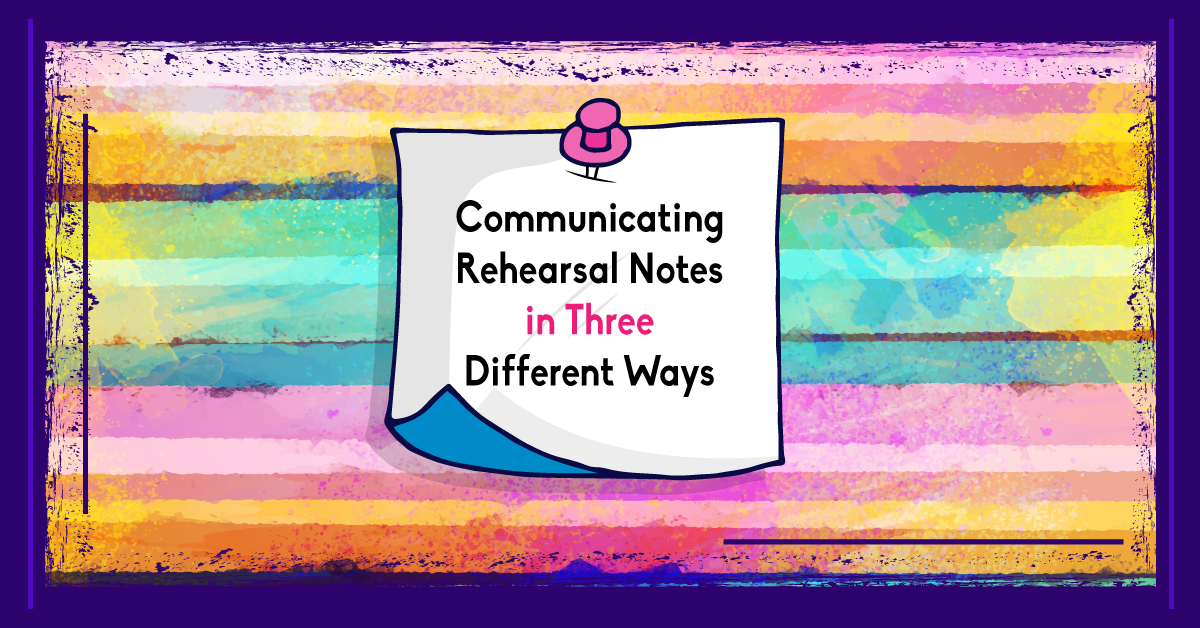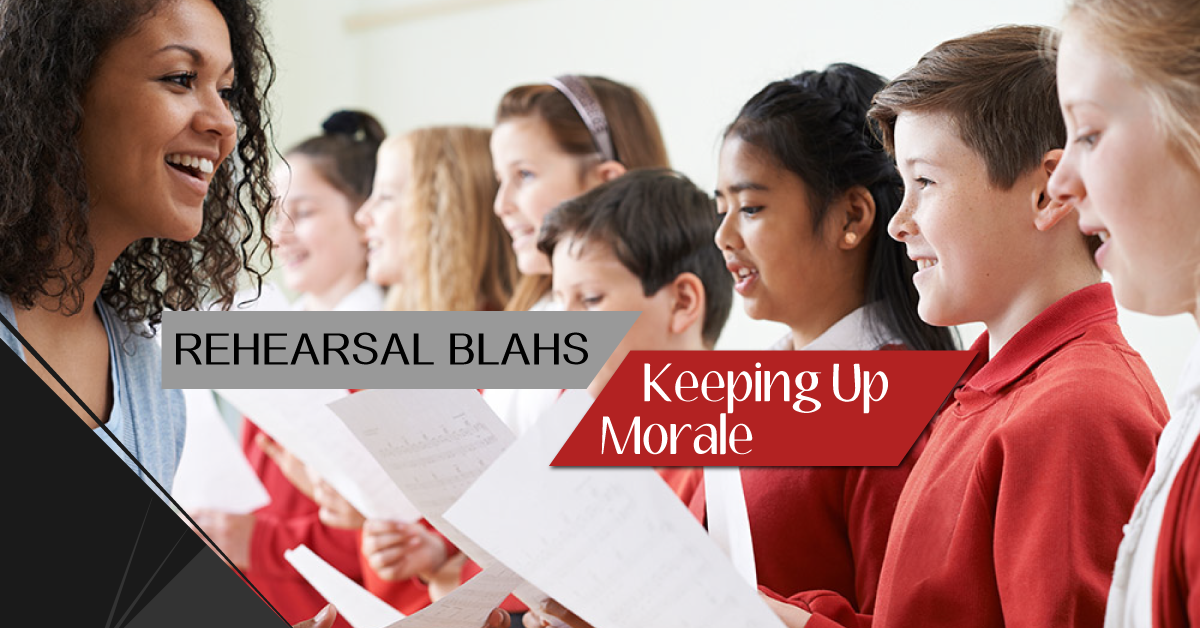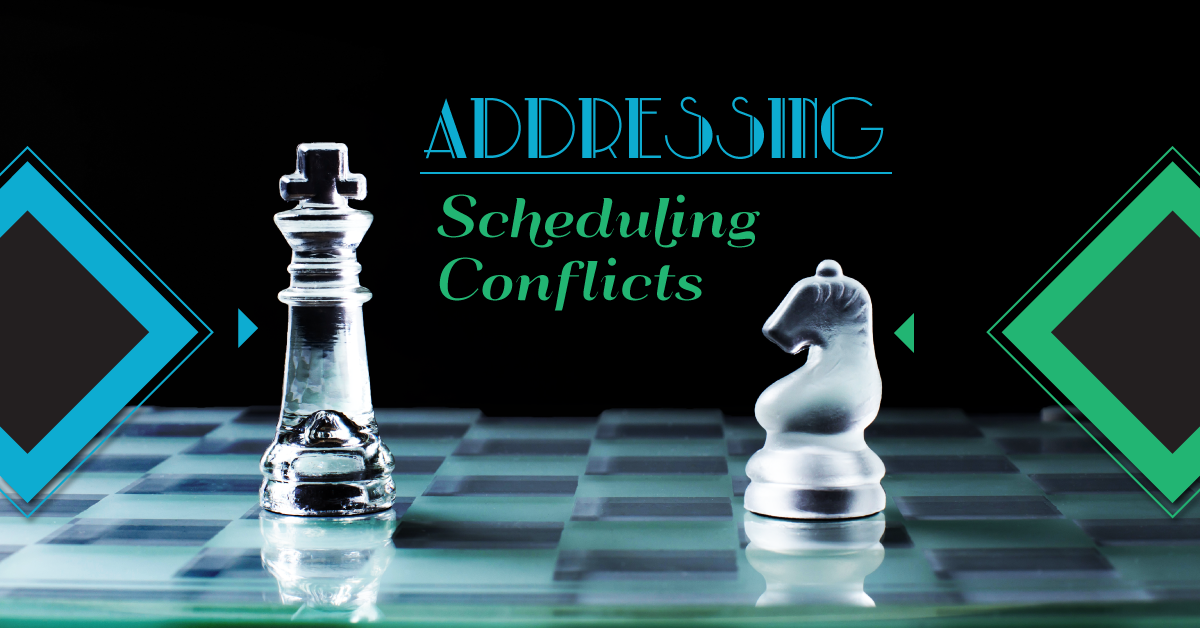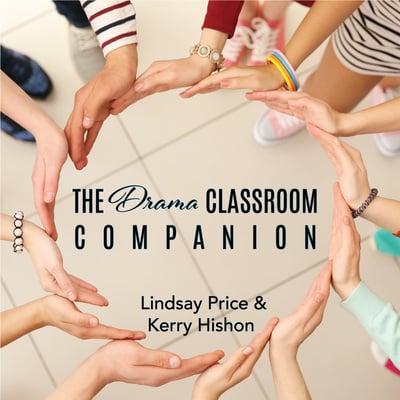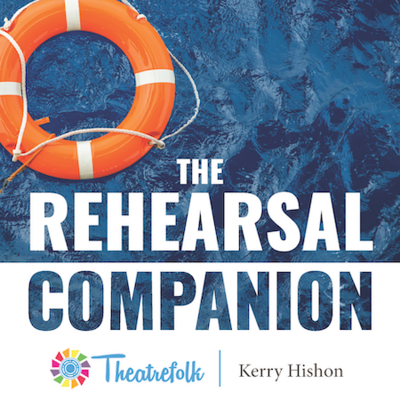There exists in everyone the potential for good or evil. Laramie Dean's adaptation of Dracula asks the question: How much would it take to bring out the darkness inside of you?
Communicating Rehearsal Notes in Three Different Ways
After every run-through of a show, directors will have a notebook or word document packed to the brim with notes – praise, corrections, problems, solutions, changes and adjustments that need to be made. This way the next run-through can be even better. But your students aren’t psychic, so how will you communicate your notes to your students? Here are three methods of communication that you might already use, or that you could try out at your next rehearsal.
1. The Classic: Reading notes out loud right after a run-through
It’s a classic for a reason: This is the most standard method of communicating notes. After a run-through, students return back to the stage and/or sit in the audience seats, while the director (and musical director and choreographer as appropriate) give notes verbally to the cast and crew. It’s beneficial because everyone is already there and the notes are fresh in the director’s mind. You are also still at the theatre and can do actual physical reviews and fixes right then and there, before everyone leaves.
However, it’s not always the most useful method. Students are generally exhausted and/or super-hyper after a run-through, and their focus is not always the best. Students may be more focused on chatting with their friends (particularly after having to be quiet backstage for a long time) and doing their own analysis of what happened during the run-through. This may also just be something I personally need to take more ownership in, but I have found that when my casts are getting into run-throughs, they are less likely to take written notes.
Giving notes out loud in a group setting can also lead to students asking questions or giving excuses as to why something happened, which makes the note session take even longer. Be sure to let students know that note-giving time is not discussion time, and any questions need to be addressed afterwards.
2. The Post-Run Rundown: Typing up notes and emailing/posting digitally
In the post-run rundown, teachers/directors take the notes home, type them up in a list format, and either email them to the cast and crew or post them digitally for the cast and crew to see (such as on a private Facebook group, on Google classroom, or on other digital communication resource). The teacher may also elect to send some notes privately as appropriate.
This is beneficial because it allows students to go home right after rehearsal and rest, and it gives them time to read and absorb the notes. They can think about them, practice at home, and then apply them at the next rehearsal. It also gives teachers/directors time to collect their thoughts and review their notes in a different setting than at the theatre (where emotions may still be running high).
The most obvious challenge with digital communication is that the notes are easily ignored, missed, lost, or simply not read. If teachers/directors decide to employ this method, they will need to figure out a way to ensure students can prove they have actually received and read the notes. As well, depending on the rehearsal schedule, there may be a tight turnaround between typing up the notes and sending them to allow students time to actually read the notes.
3. The Checklist: Posting notes backstage
This is a method I have not used personally, but many of my colleagues have used it and found it to be effective. Similar to the post-run rundown method, students are dismissed after rehearsal and the teacher/director types up the notes from the run-through. However, the notes are formatted as a checklist, with a small space next to each note point for the applicable student to initial that they have received and understand the note. The note list is then printed and posted up in the backstage or rehearsal area, and students are responsible for consulting the list and ensuring that they have received their notes before the next rehearsal.
This method is beneficial because it puts the onus on the student to get their notes. It reduces the stress on teachers/directors and it teaches the students responsibility. A student didn’t get their notes? That’s on them now. It’s also easy to track who read the notes and who didn’t, as students must initial to indicate that they got their notes.
The downside to this method is that, again, it’s easy enough for students not to read the notes. It can also cause some stress in the backstage/rehearsal area if many students are trying to crowd around the note sheet. (It may be beneficial to print multiple copies of the note sheet and post them in various areas to avoid congestion.) It also doesn’t allow a lot of time for students to read and absorb their notes before the next rehearsal. Students might think they can simply read the notes once they arrive at rehearsal, which can waste group time. Teachers/directors may have to specify that students must come and read the notes on their own time before rehearsal.
Related Articles
The Drama Classroom Companion
by Lindsay Price & Kerry Hishon
The Drama Classroom Companion is filled with articles and exercises to build the skills needed for theatrical performance as well as real world skills like creative thinking, critical thinking, collaboration, and communication.
The Rehearsal Companion
by Kerry Hishon
You’ve chosen the play, paid the royalties, done the script analysis, held your auditions, and cast the show. Tomorrow is the first rehearsal. Are you ready? Really ready? The Rehearsal Companion can help!
